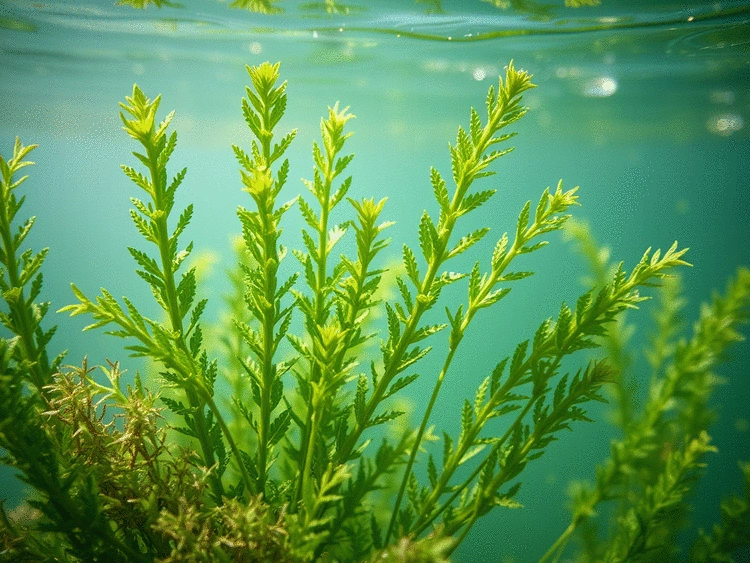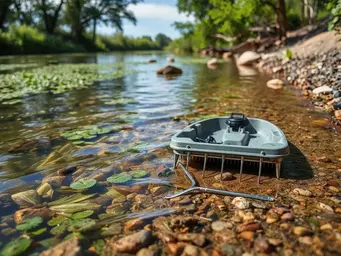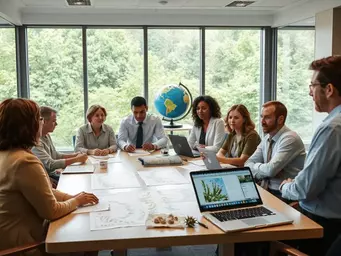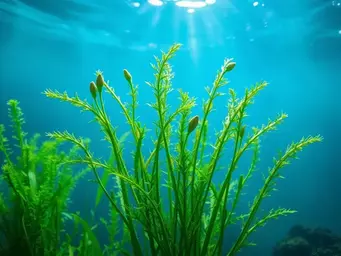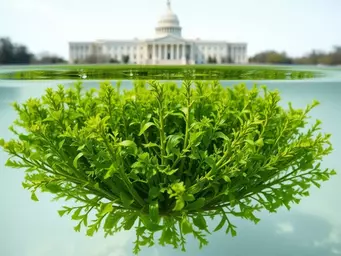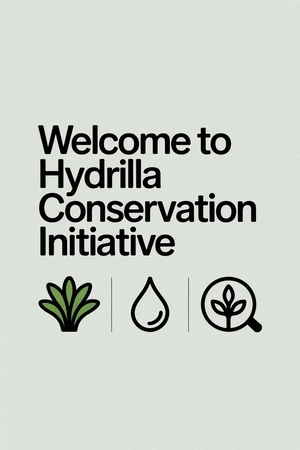Did you know that hydrilla can grow up to 25 feet long, disrupting local ecosystems? Understanding how to identify this invasive species is critical for preserving our waterways.
What You Will Learn
- Recognize hydrilla by its unique serrated leaves, typically arranged in whorls of five to seven.
- Identify potato-like tubers that allow hydrilla to survive harsh conditions and contribute to its regrowth.
- Understand the importance of hydrilla's slender stems and fibrous root systems for effective identification.
- Utilize visual identification aids and field guides to improve your recognition skills in the field.
- Learn about the ecological impacts of hydrilla and the significance of early identification for ecosystem management.
Key Identification Features of Hydrilla
Understanding the distinct characteristics of Hydrilla is crucial for effective management and conservation. The visual guide below highlights its key features in comparison to similar aquatic plants.
Serrated Leaves & Whorls
Hydrilla leaves are typically 1-4 inches long with distinct serrated edges, arranged in whorls of 5-7 around the stem. This specific arrangement and texture are primary identifiers.
Hydrilla: Serrated, 5-7 leaves per whorl.
Potato-like Tubers
Hydrilla reproduces through resilient, potato-like tubers found in sediment. These structures allow it to survive harsh conditions and regenerate, making them critical for identification and management.
Tubers: Dormant survival, key to spread.
Stem Structure & Roots
Slender stems can reach up to 25 feet, adapting to various water levels. Dense, fibrous root systems anchor the plant firmly, contributing to its aggressive nature and resilience.
Stem/Roots: Long, flexible stems, fibrous roots.
Comparison with Similar Species
Differentiating Hydrilla from look-alikes like Elodea (smooth leaves, pairs) and Egeria (broad, non-serrated leaves) is crucial for accurate identification.
Elodea: Smooth, paired leaves. Egeria: Broad, non-serrated.
Understanding Hydrilla: Key Characteristics for Identification
Hydrilla, often referred to as the “aquatic weed,” is a significant invasive species that thrives in our freshwater ecosystems. Understanding this plant's key characteristics is crucial for effective management and conservation efforts. As an aquatic biologist, I've seen firsthand the detrimental effects hydrilla can have on native habitats, making its identification a vital skill for environmental professionals and educators alike.
In this section, we'll delve into the importance of recognizing hydrilla and outline the distinct features that define this invasive plant. By becoming proficient in identifying hydrilla, we can contribute to the conservation of our vital waterways and wetlands. Are you ready to explore its unique traits?
What is Hydrilla and Why is it Important to Identify?
Overview of Hydrilla as an Invasive Species
Hydrilla verticillata is a perennial aquatic plant that can grow rapidly, forming dense mats on the surface of water bodies. This invader is notorious for outcompeting native plants, disrupting local ecosystems, and affecting water quality. Its ability to spread quickly through fragments and tubers makes it a formidable foe for conservationists. For a comprehensive overview of hydrilla's impact and characteristics, you can refer to resources from the New York State Department of Environmental Conservation.
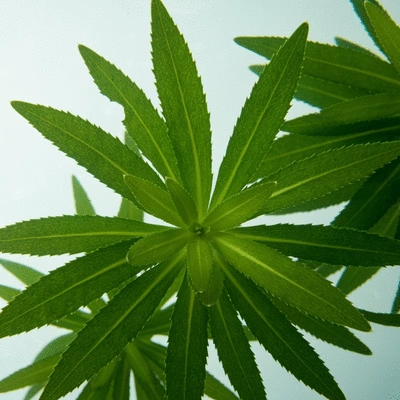
As professionals dedicated to safeguarding our native ecosystems, understanding hydrilla’s behavior and growth patterns is essential. Its aggressive nature not only alters biodiversity but can also impact recreational activities and water management efforts.
The Role of Identification in Ecosystem Management
Accurate identification of hydrilla is the first step in implementing effective management strategies. Recognizing hydrilla amidst other aquatic plants ensures timely intervention. I often guide my clients and community members on the importance of identification in ecosystem management, as it empowers them to take action.
- Early detection can prevent extensive spread.
- Identifying hydrilla helps in selecting the right management techniques.
- Community awareness leads to collective action against invasives.
By raising awareness and educating ourselves and others, we can foster a collaborative approach to combat hydrilla and restore our natural habitats.
Distinguishing Features of Hydrilla
Serrated Leaves: Characteristics and Patterns
One of the hallmark features of hydrilla is its serrated leaves, which typically grow in whorls. The serrations can vary in size, making them one of the key characteristics to observe during identification. These leaves are usually around 1 to 4 inches long and can be distinguished by their sharp edges, which are easy to spot.
As you venture into local waterways, pay close attention to these serrated leaves. Their unique structure plays a significant role in how hydrilla competes with native species. Have you noticed these leaf patterns in your area?
Leaf Whorls: Understanding the Arrangement
The arrangement of hydrilla's leaves is another distinctive trait. Typically, the leaves grow in whorls of five to seven around the stem, which is a defining feature that sets it apart from other aquatic plants. This whorled formation can create a lush appearance but also signals the presence of an invasive species.
- Look for groups of five to seven leaves.
- Note the spacing between whorls, as it can vary based on water conditions.
Understanding this leaf arrangement is crucial when identifying hydrilla in the field. It helps differentiate hydrilla from similar species like Elodea, which has a different leaf structure.
Identifying Tubers: The Potato-like Structure
Hydrilla also reproduces through tubers, which are potato-like structures that help it survive adverse conditions. These tubers can remain dormant in sediment for years and contribute to the plant’s ability to regenerate even after removal efforts. It's essential to recognize these tubers as part of the identification process. More information on hydrilla's biology and methods of spread, including tubers, can be found on the National Invasive Species Information Center website.
- Look for round, white to brown tubers in the substrate.
- Understanding their presence is key to managing hydrilla effectively.
By identifying tubers, we can develop more informed management strategies and prevent hydrilla from taking root in our precious ecosystems.
Understanding Stem Structure and Root Systems of Hydrilla
The stems of hydrilla are slender and can reach lengths of up to 25 feet in favorable conditions. They have a unique structure that allows them to float or grow underwater as needed. Additionally, the root systems are fibrous and often anchor the plant firmly, contributing to its resilient nature.
Recognizing hydrilla's stem and root features can greatly assist in your identification efforts. It's not just about spotting the leaves but understanding how this plant interacts with its environment:
- Observe the flexibility of the stems—hydrilla can adapt to various water levels.
- Check the root system; if it appears dense and fibrous, you may be looking at hydrilla.
As we become more adept at identifying these characteristics, we enhance our collective capacity to manage and restore our ecosystems effectively.
Visual Identification Guide for Hydrilla
Integrating Images and Visual Aids for Better Recognition
A visual guide can significantly enhance the identification process. At the Hydrilla Conservation Initiative, we provide illustrated resources that showcase hydrilla’s distinctive features. These aids are invaluable for both professionals and educators looking to train others in identification techniques.
Having these visual tools at hand encourages exploration and learning, promoting confidence in recognizing hydrilla in the field.
Comparison Images: Hydrilla vs. Similar Species
To further assist in identification, we offer comparison images that highlight the differences between hydrilla and similar aquatic plants, such as Elodea and Egeria. By visually engaging with these images, it's easier to spot the defining traits of hydrilla.
- Hydrilla: Serrated leaves, whorled arrangements.
- Elodea: Smooth leaves, typically in pairs.
- Egeria: Broad leaves, not serrated.
These comparisons can facilitate quick identification in the field while educating others about the nuances of these aquatic plants.
Identification Tips: Using a Field Guide for Accurate Recognition
Equipping yourself with a reliable field guide can make all the difference in your identification efforts. I recommend having a portable guide that features detailed images and descriptions of hydrilla and other invasive species. Here are some tips for using a field guide effectively:
- Familiarize yourself with hydrilla's characteristics before heading out.
- Take photos of suspected hydrilla and compare them with the images in your guide.
- Engage with local experts or groups to discuss your findings and experiences.
Utilizing a field guide not only aids in accurate identification but also enriches your understanding of the broader aquatic ecosystem.
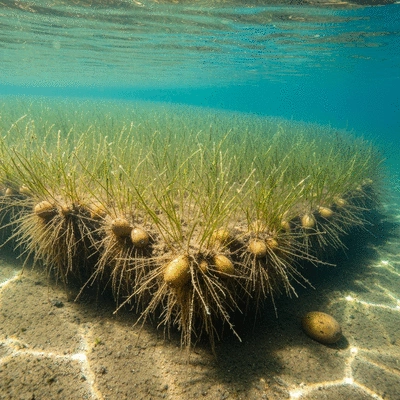
Pro Tip
When attempting to identify hydrilla in the field, consider bringing along a smartphone or camera to document your findings. Taking photos of the serrated leaves, whorled arrangements, and tubers can not only help you compare them later with field guides, but also allow you to share your observations with local conservation groups. This collaborative approach can enhance community awareness and foster a collective effort in managing hydrilla effectively.
Frequently Asked Questions About Hydrilla Identification
What are the primary identifying characteristics of hydrilla?
The primary identifying characteristics of hydrilla include its serrated leaves, which are typically arranged in whorls of five to seven around the stem, and the presence of potato-like tubers in the sediment.
How do hydrilla tubers contribute to its spread and survival?
Hydrilla tubers are resilient, potato-like structures that can remain dormant in sediment for years. They allow the plant to survive harsh conditions and regenerate, making them a key factor in its aggressive spread and difficulty in management.
How can I differentiate hydrilla from similar aquatic plants like Elodea or Egeria?
Hydrilla can be differentiated from Elodea and Egeria by its serrated leaves and whorled arrangement of five to seven leaves. Elodea typically has smooth leaves arranged in pairs, while Egeria has broad, non-serrated leaves.
Why is early identification of hydrilla so important for ecosystem management?
Early identification of hydrilla is crucial because it allows for timely intervention, which can prevent extensive spread and reduce the overall impact on native ecosystems. It ensures that appropriate management strategies can be implemented before the plant becomes too established.
What resources are available to help me identify hydrilla in the field?
Resources for identifying hydrilla in the field include visual identification guides, field guides with detailed images and descriptions, and educational materials provided by conservation initiatives like the Hydrilla Conservation Initiative. Engaging with local experts and conservation groups can also provide valuable insights.
Wrapping Up: Recognizing the Importance of Hydrilla Identification
As we reach the conclusion of our exploration into the intriguing world of hydrilla, it’s crucial to emphasize the importance of accurate identification. Understanding how to recognize hydrilla is not just about knowing what it looks like; it’s about protecting our waterways and ensuring the health of our aquatic ecosystems. Remember, hydrilla can wreak havoc when left unchecked, and your ability to identify it can make a significant difference in your local environment! For a detailed guide on identifying hydrilla, including its distinct features and comparisons to other weeds, you can consult resources like the Purdue University Weed Science Guide.
To recap, here are some key takeaways about identifying hydrilla:
- Serrated leaves that typically grow in whorls of five to seven offer a distinct pattern.
- Potato-like tubers provide an essential clue for identification, as they help hydrilla survive adverse conditions.
- Understanding stem structure and root systems can also aid in distinguishing hydrilla from native species.
These features are significant not just for identification but for implementing effective management strategies. By recognizing hydrilla early, you contribute to preventing its spread and mitigating its impact on local biodiversity.
Engaging with Local Efforts to Manage Invasive Species
Now that you understand the importance of identifying hydrilla, how can you take action in your local community? Participating in hydrilla management initiatives can be both fulfilling and impactful. Here are some ways you can become involved:
- Join local conservation groups focused on invasive species management.
- Participate in community clean-up events aimed at removing hydrilla from local waterways.
- Attend workshops or seminars that educate the public on the importance of managing invasive species.
By engaging with these efforts, you can help create a community that is informed and equipped to tackle the challenges posed by hydrilla and other invasive species. Remember, every small effort counts in the grand scheme of ecosystem management!
Resources for Further Learning and Engagement
To deepen your understanding of hydrilla and invasive species management, I recommend exploring the following resources:
- The Hydrilla Conservation Initiative website, which provides a wealth of science-based resources and management tutorials.
- Local environmental organizations that often host educational workshops and volunteer opportunities.
- Online forums and social media groups where you can connect with other enthusiasts and professionals in the field.
These resources can empower you with the knowledge and connections needed to make a real difference in your community!
Exploring Conservation Efforts and Ecological Surveys for Long-term Solutions
Finally, as you engage with the fight against hydrilla, consider exploring conservation efforts and ecological surveys conducted in your area. These initiatives often provide vital data that can help inform management decisions and strategies. Collaborating with scientists and environmentalists can enhance your understanding of the situation and foster a sense of community commitment.
In conclusion, recognizing and managing hydrilla is crucial for the health of our waterways. By understanding its identification and becoming an active participant in local initiatives, you contribute to the broader mission of protecting our ecosystems. So, what will your next step be in this journey of stewardship? Let’s work together towards a healthier aquatic environment!
Recap of Key Points
Here is a quick recap of the important points discussed in the article:
- Serrated leaves typically grow in whorls of five to seven, making them a distinct characteristic for identification.
- Potato-like tubers are crucial for hydrilla's survival and can remain dormant, aiding in its spread.
- Understanding stem structure and root systems helps in distinguishing hydrilla from native aquatic plants.
- Early identification is vital for effective management and control of hydrilla's spread.
- Utilizing visual aids and field guides enhances the identification process and promotes community awareness.
